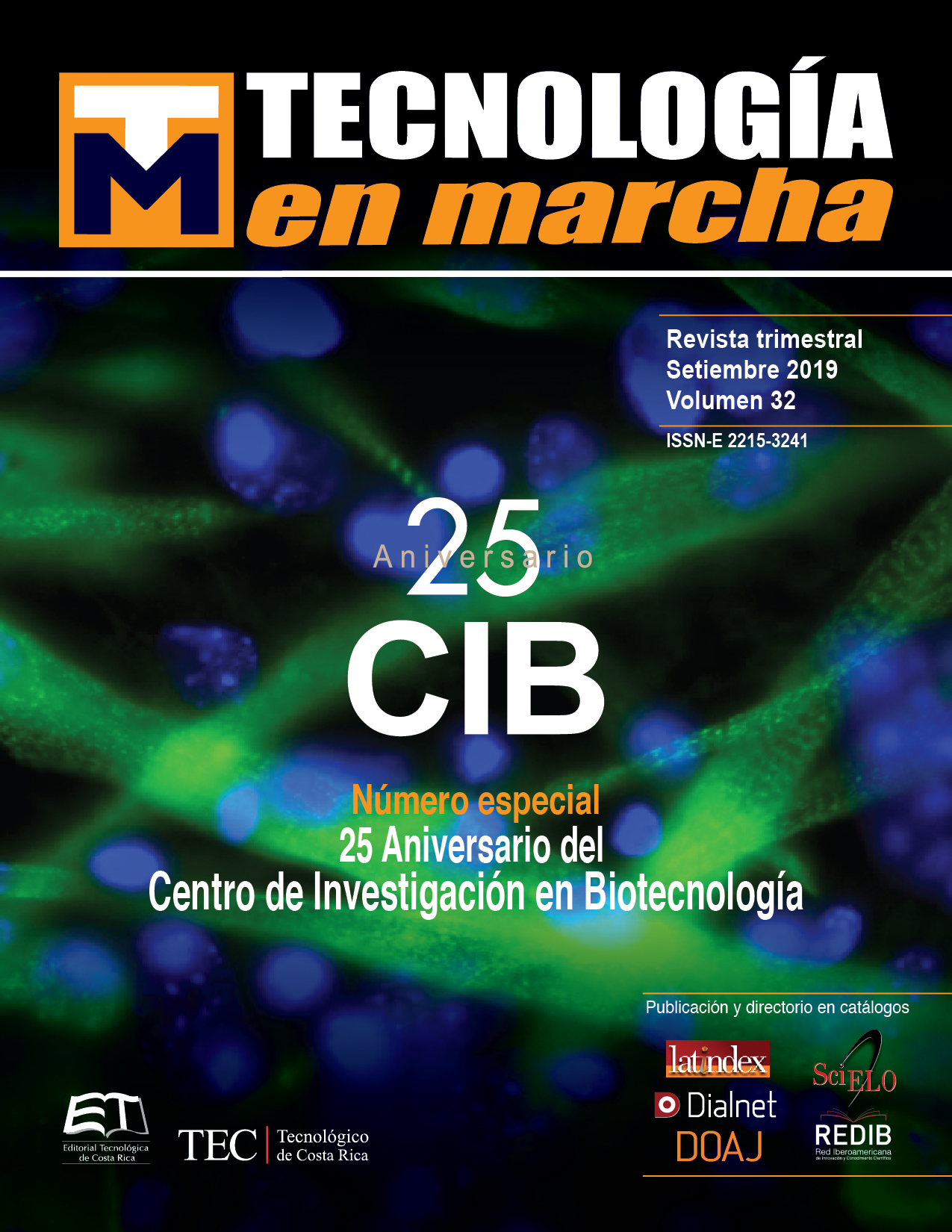Helicobacter pylori en Costa Rica, más de una década de investigaciones
Contenido principal del artículo
Resumen
En investigaciones realizadas en el Centro de Investigación en Biotecnología (CIB) en agua de consumo humano de Costa Rica, se analizó un total de 112 muestras de agua potable de 20 cantones situados en áreas de baja y alta incidencia de cáncer gástrico del país. Se logró el cultivo exitoso y la identificación molecular de la bacteria Helicobacter pylori con el marcador glmM en el 39% de las muestras de áreas de alta incidencia y en el 7.5% de las muestras de áreas de baja incidencia. Además, se analizaron muestras de agua potable (n = 44) de acueductos costarricense con tratamiento de cloración en áreas seleccionadas con alta prevalencia de cáncer gástrico, así como muestras de agua de consumo humano de Panamá (n = 44) de acueductos que suministran agua no tratada para consumo humano en la provincia de Chiriquí. En el caso de las muestras de Costa Rica, se determinó que el 79.5% de las muestras fue positivo para H. pylori; eliminando valores atípicos, la cuantificación de las bacterias se determinó en 3,6 × 103 copias/100 mL de agua. Para Panamá, se determinó que el 86% de las muestras fueron positivas para la presencia de H. pylori con un valor de 3.3 × 102 copias/100 mL agua. La diferencia en los valores entre los acueductos en ambos países reveló una distribución ambiental de las bacterias de interés epidemiológico en cada caso, que puede explicar la diferencia entre las tasas de cáncer gástrico entre ambos países.
Detalles del artículo
Los autores conservan los derechos de autor y ceden a la revista el derecho de la primera publicación y pueda editarlo, reproducirlo, distribuirlo, exhibirlo y comunicarlo en el país y en el extranjero mediante medios impresos y electrónicos. Asimismo, asumen el compromiso sobre cualquier litigio o reclamación relacionada con derechos de propiedad intelectual, exonerando de responsabilidad a la Editorial Tecnológica de Costa Rica. Además, se establece que los autores pueden realizar otros acuerdos contractuales independientes y adicionales para la distribución no exclusiva de la versión del artículo publicado en esta revista (p. ej., incluirlo en un repositorio institucional o publicarlo en un libro) siempre que indiquen claramente que el trabajo se publicó por primera vez en esta revista.

